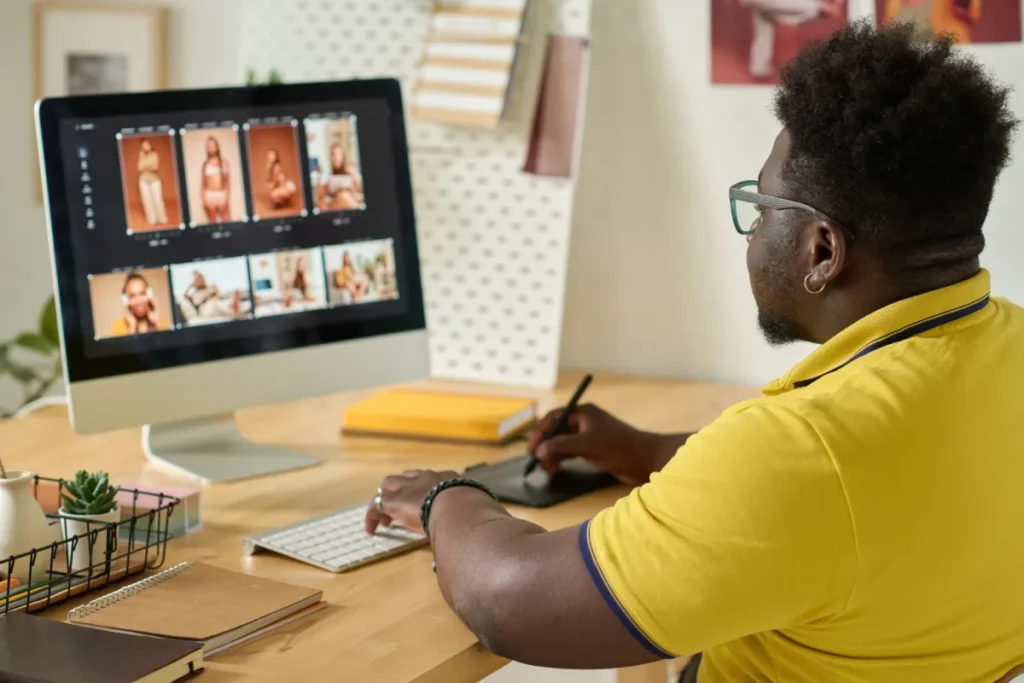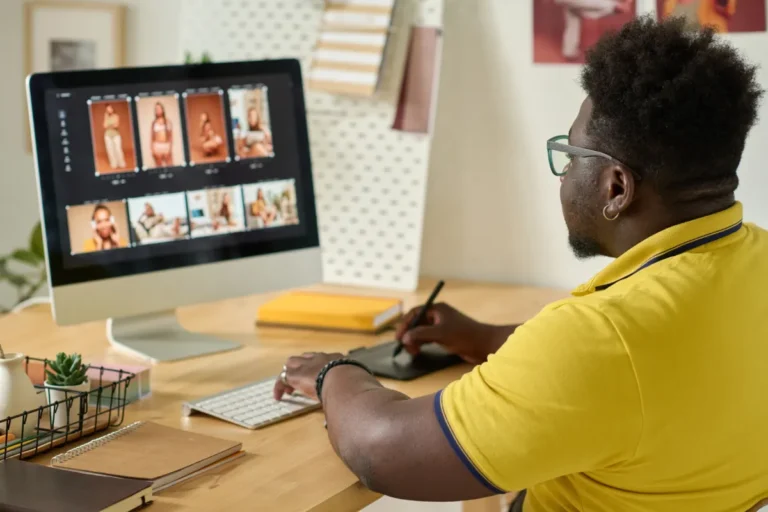The most effective marketing serves to present a solution, tell a story or achieve some combination of the two. Contrary to what many people might believe, the primary goal of a single marketing campaign shouldn’t be to sell a brand. Selling of the brand comes secondary; it’s a side effect of a great campaign, one that leaves people convinced that this one solution is the best, or that this one story speaks to them the most. Once someone has connected with the solution or the story, they then connect with the brand responsible for delivering it.
This isn’t to say that some brand names haven’t become synonymous with a particular story or solution. When you think of Apple, for example, you immediately think of sleek, cutting edge tech that’s easy to use and beautiful to look at. Apple has indeed reached a point where their brand name alone can sell products, but that connection wasn’t forged overnight. It came from many successful campaigns that repeated the same message and consistently resonated with consumers.
Assuming that “Apple status” is your end goal, what’s the most efficient marketing path for getting there? A good place to start, unsurprisingly, is with a strategy rooted in video. We’ve shared with you the powerful storytelling and engagement capabilities of video; you can find a closer look at that data in our blogs here, here and here.
As a quick refresher:
- 90% of the information humans take in is done visually and is processed faster and remembered 40% more reliably than text. That number increases to 68% retention when both audio and visual senses are stimulated, as is the case with video.
- 60 seconds of video is equivalent to 1.8 million words according to research conducted by Forrester.
- 80% of people recall a video ad they viewed in the past 30 days.
- Enjoyment of video ads increase brand recognition by 139%.
Because of all this, video has been a popular choice for creatives seeking to deliver engaging, memorable content alongside a subtle message that says “this is the brand you want.” Of course some brands execute creative innovation better than others, and some campaigns see higher success with consumers.
Below are some of our favourite extraordinary examples of innovation video campaigns that have pushed the creative envelope, delivered superior stories and skillfully woven brand aesthetics and ideals.
1. Haagen-Dazs’ “The Extraordinary Honey Bee” Virtual Reality Campaign
Haagen-Dazs loves honey bees. The power of aligning a brand with a social or environmental cause cannot go understated – it’s a main tenet of Growing Customer Loyalty 101. When you align with a cause that your target demographic cares about, you open the door for people to feel like they’re supporting the cause simply by doing business with you.
In this case, Haagen-Dazs has chosen to shed light on the Colony Collapse Disorder through a virtual reality campaign due out this summer. While we haven’t gotten to experience the campaign in full yet, the trailer above foreshadows incredible things – gorgeous graphics, a compelling story and a really clever use of VR to bring viewers down to the perspective of one surprisingly baritone honey bee in crisis.
On top of the video roll out, Haagen-Dazs will be highlighting the fact that since 2008 they have donated over $1,000,000 to honey bee research. Notice that nowhere are we actually talking directly about ice cream, Haagen-Dazs’ primary product, and yet this is a marketing campaign they’ve thrown a ton of resources behind. Why? Because they know that being vocal about their support of this cause will resonate with many of their customers and raise people’s opinion of the brand.
Alex Placzek, Haagen-Dazs’ director of marketing in the US, said after a viewing of the trailer at Sundance Film Festival, “At the core brands are basically a story so if you don’t tell a compelling and engaging story you’re basically a commodity. What we’re excited about is learning how to tell stories in a much more impactful way.”
We’ll see how Placzek and his team execut this ambitious project when it’s released in June, but our hopes are high.
2. Nike+’s Personalised “Your Year with Nike+” Campaign
Runners will tell you that the simple act of running is frequently an extremely personal thing. You run to manage stress, you run for your health, you run to raise money for cancer research, you run to think, you run because it’s your only slice of “me-time” in a hectic schedule. The list goes on.
How do you tell a story that resonates with everyone, when everyone’s motivations vary so widely? Nike+ sought meet this challenge head-on when they launched a marketing campaign built on a very unique type of creative innovation: Personalised Video.
Together with creative agency AKQA, Nike+ sent personalised variations of a “Year in Review” video to over 100,000 customers. The videos leveraged unique factors like location, weather, activity and Nike+ users’ fitness tracker data to motivate people to push themselves further in the year ahead.
David Schriber, VP of North America Brand Marketing at Nike said of the campaign, “Each video is a personalised story of a year of hard work, whether from an individual or an entire city, they reflect the conviction and effort that goes into making your year count.”
The effect of the campaign celebrates Nike+ users, making them feel good about themselves and their unique accomplishments with Nike gear.
3. Tesco’s Clubcard Personalised Video Campaign
Loyalty club benefits. Exciting in that they save you money, but not something that would usually get your heart racing. So how do you inspire loyalty club members to engage with the program and redeem their rewards?
Creative agency Signal Productions took on this challenge for Tesco Clubcard, where the aim was to raise awareness about unused vouchers and provide personalised motivation for members to get out there and start saving.
Signal TV leveraged Idomoo Native Personalised Video to recreate a story we all know quite well, one that’s told through the familiar images of home – a cluttered kitchen table, an open magazine, a half-eaten croissant. They’re symbols that specifically tie to Tesco, a brand whose products fill kitchen cupboards and refrigerators, and who help millions of families put meals on the table.
The magic of the campaign is that the table scape changes based on customer demographic data. Specific objects are selected and scenes are shown based on what most appeals to viewers. What one Clubcard viewer sees on the tablet in the video or in the pages of the magazine is different than what another Clubcard member sees.
It’s a savvy opportunity to connect with customers — based on their interests and shopping habits — to drive excitement for available rewards that are individually appealing and most likely to drive action.
Interested in making video part of your marketing strategy?
These blogs can help you push your marketing plans to the next level…





